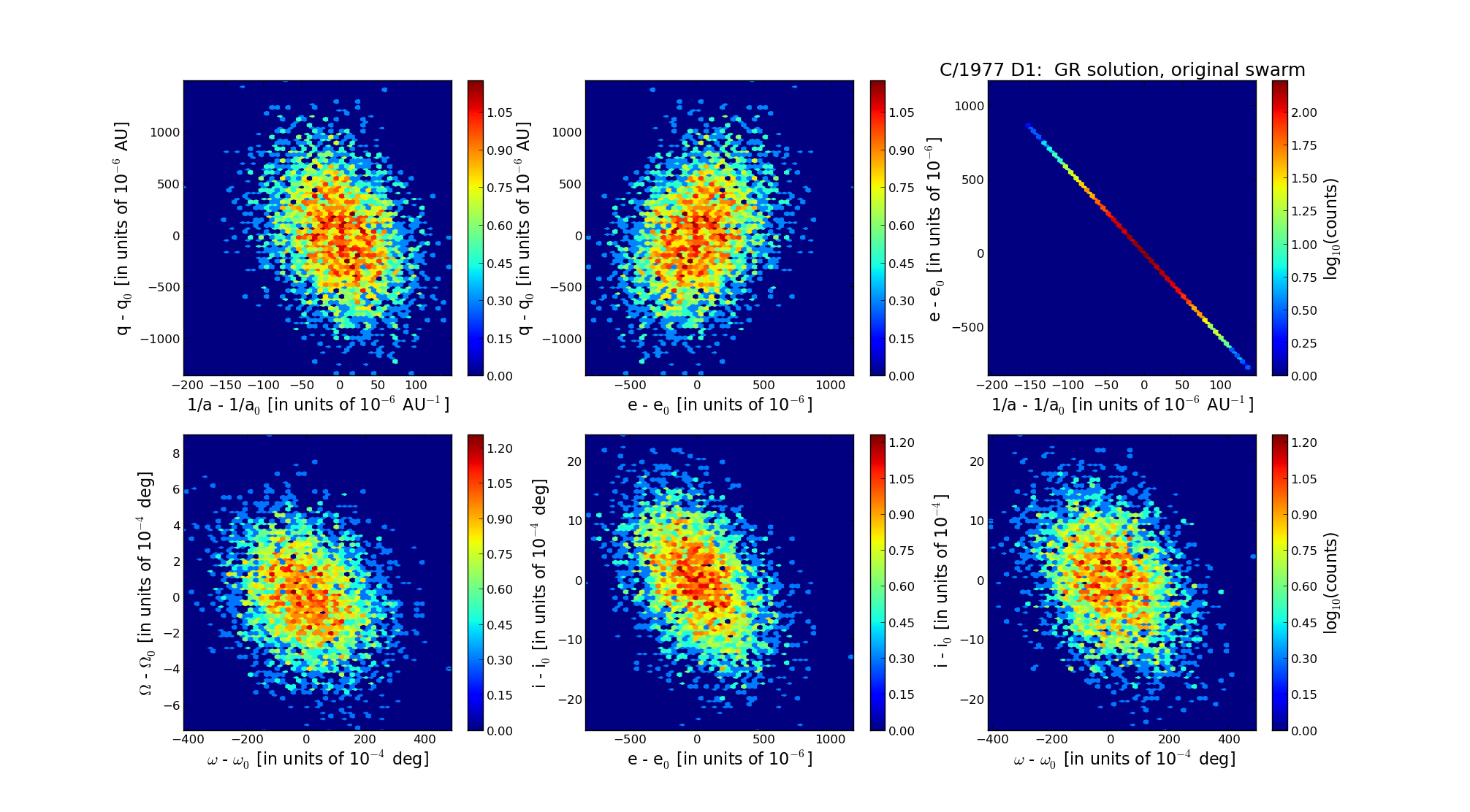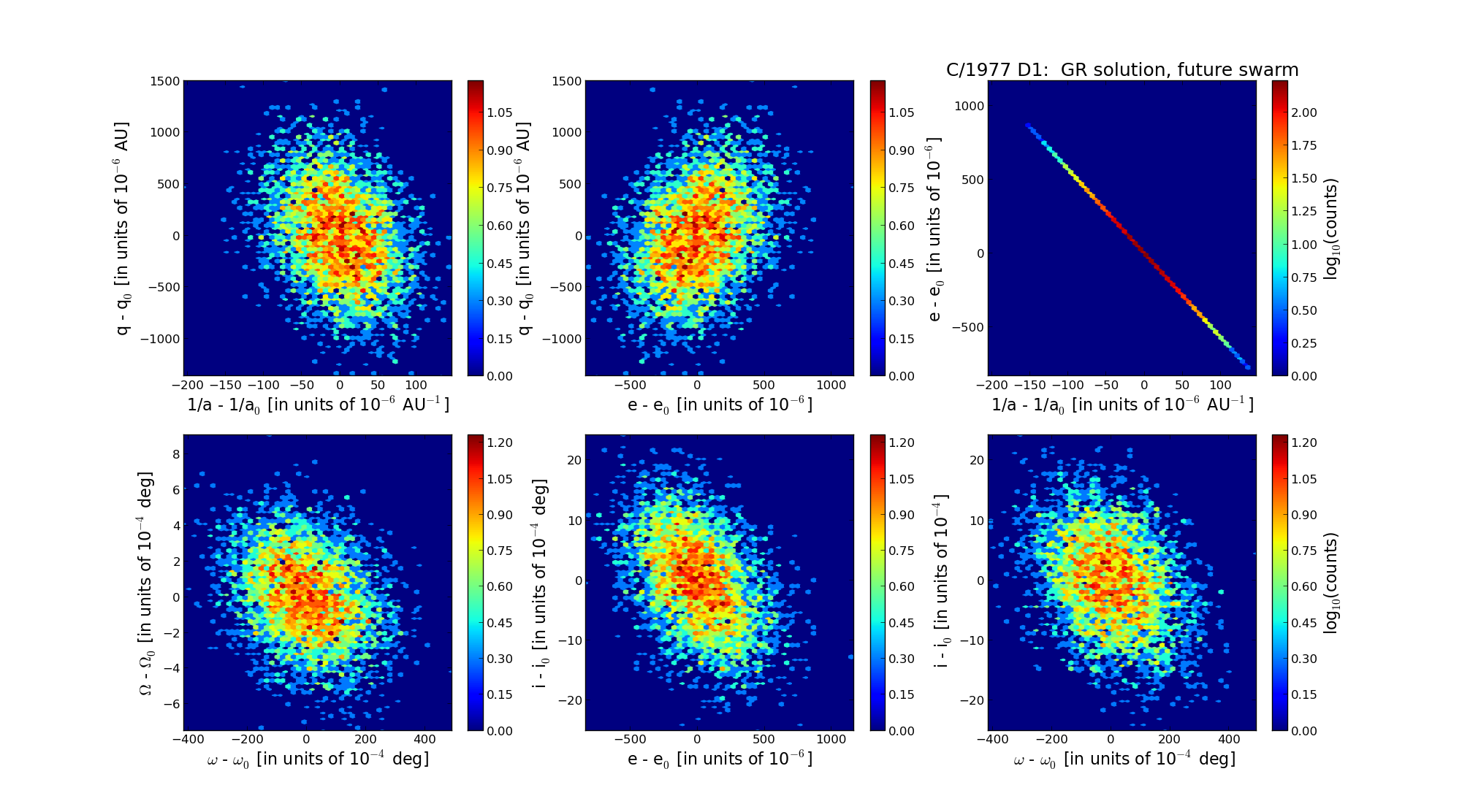| Solar System Dynamics & Planetology Group |
 |
C/1977 D1 Lovas |  |
| Solar System Dynamics & Planetology Group |
 |
C/1977 D1 Lovas |  |
| number of observations | 17 |
| number of residuals | 34 |
| data interval | 1977 Feb. 17 — 1978 Apr. 7 |
| rms [arcsec] | 2.38 |
| orbit quality class | 1b |
| Epoch (TT) | 19761029.0 | = JD 2443080.5 |
| time of perihelion passage (TT) | 19761031.960060 | ± 0.113630 |
| perihelion distance | 5.71540781 | ± 0.00042708 |
| eccentricity | 1.00408515 | ± 0.00025922 |
| argument of perihelion [deg] | 146.270960 | ± 0.012528 |
| longitude of the ascending node [deg] | 338.171393 | ± 0.000233 |
| inclination [deg] | 64.524257 | ± 0.000742 |
| inverse semimajor axis [10-6 au-1] | -714.76 | ± 45.31 |

| Epoch (TT) | 16691217 | |
| time of perihelion passage (TT) | 19761102.341658 | ± 0.113509 |
| perihelion distance | 5.71177376 | ± 0.00042775 |
| eccentricity | 0.99976222 | ± 0.00025978 |
| argument of perihelion [deg] | 146.387958 | ± 0.012491 |
| longitude of the ascending node [deg] | 338.213491 | ± 0.000223 |
| inclination [deg] | 64.551800 | ± 0.000734 |
| inverse semimajor axis [10-6 au-1] | 41.63 | ± 45.48 |

| Epoch (TT) | 22830222 | |
| time of perihelion passage (TT) | 19761031.923915 | ± 0.113578 |
| perihelion distance | 5.70335038 | ± 0.00042932 |
| eccentricity | 1.00002631 | ± 0.00025920 |
| argument of perihelion [deg] | 146.125892 | ± 0.012500 |
| longitude of the ascending node [deg] | 338.203940 | ± 0.000225 |
| inclination [deg] | 64.559191 | ± 0.000732 |
| inverse semimajor axis [10-6 au-1] | -4.61 | ± 45.45 |